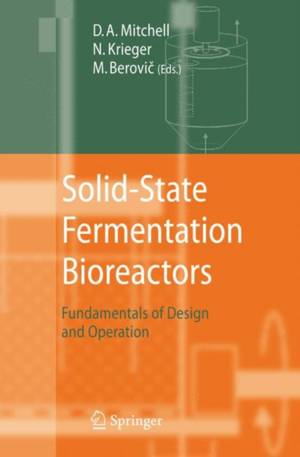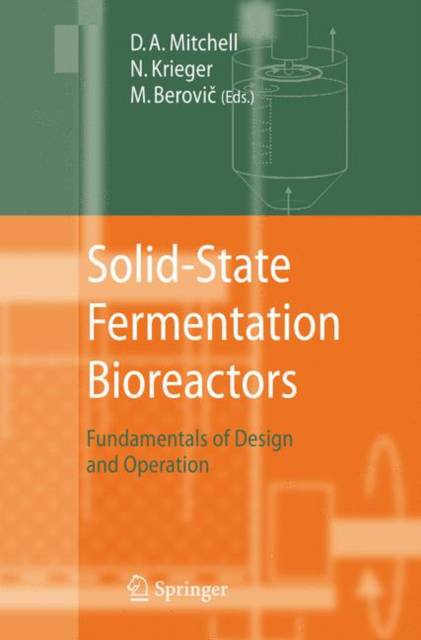
Je cadeautjes zeker op tijd in huis hebben voor de feestdagen? Kom langs in onze winkels en vind het perfecte geschenk!
- Afhalen na 1 uur in een winkel met voorraad
- Gratis thuislevering in België vanaf € 30
- Ruim aanbod met 7 miljoen producten
Je cadeautjes zeker op tijd in huis hebben voor de feestdagen? Kom langs in onze winkels en vind het perfecte geschenk!
- Afhalen na 1 uur in een winkel met voorraad
- Gratis thuislevering in België vanaf € 30
- Ruim aanbod met 7 miljoen producten
Zoeken
Solid-State Fermentation Bioreactors
Fundamentals of Design and Operation
Mitchell David
Hardcover | Engels
€ 251,45
+ 502 punten
Omschrijving
Although solid-state fermentation (SSF) has been practiced for many centuries in the preparation of traditional fermented foods, its application to newer products within the framework of modern biotechnology is relatively restricted. It was c- sidered for the production of enzymes in the early 1900s and for the production of penicillin in the 1940s, but interest in SSF waned with the advances in submerged liquid fermentation (SLF) technology. The current dominance of SLF is not s- prising: For the majority of fermentation products, it gives better yields and is e- ier to apply. It is notoriously difficult to control the fermentation conditions in SSF; these difficulties are already apparent at small scale in the laboratory and are exacerbated with increase in scale. However, there are particular circumstances and products for which SSF technology is appropriate. For example, a desire to reuse solid organic wastes from agriculture and food processing rather than simply discarding them leads naturally to the use of SSF. Further, some microbial pr- ucts, such as fungal enzymes and spores, amongst others, are produced in higher yields or with better properties in the environment provided by SSF systems. With recognition of this potential of SSF, a revival of interest began in the mid- 1970s. However, the theoretical base for SSF bioreactor technology only began to be established around 1990.
Specificaties
Betrokkenen
- Auteur(s):
- Uitgeverij:
Inhoud
- Aantal bladzijden:
- 448
- Taal:
- Engels
Eigenschappen
- Productcode (EAN):
- 9783540312857
- Verschijningsdatum:
- 20/04/2006
- Uitvoering:
- Hardcover
- Formaat:
- Genaaid
- Afmetingen:
- 156 mm x 234 mm
- Gewicht:
- 852 g

Alleen bij Standaard Boekhandel
+ 502 punten op je klantenkaart van Standaard Boekhandel
Beoordelingen
We publiceren alleen reviews die voldoen aan de voorwaarden voor reviews. Bekijk onze voorwaarden voor reviews.









